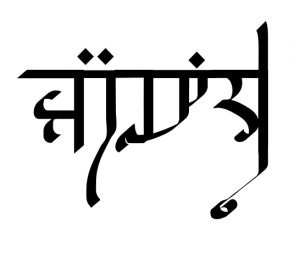Difference between revisions of "Challanushra"
Trismegistus (talk | contribs) m |
Trismegistus (talk | contribs) m |
||
| Line 10: | Line 10: | ||
{{Main|Necropolis of Challanushra}} | {{Main|Necropolis of Challanushra}} | ||
The necropolis of the city-state ruler, resting on the steep heights of [[Goshand Island]] on [[Lake Vimala]], was known since antiquity and surveys by [[archeologer]]s have determined that it is entirely looted, although this is disputed. The once lavish decoration of the tombs is nearly all faded. In 2697, Johaulian archeologers confirmed the discovery of the Necropolis of Challanushra in the forest of the [[Tulampta Peninsula]]. The site is now protected and entry forbidden without authorization. Most of the artifacts retrieved rest in the [[Jaithan Museum of Vimalian Antiquities]]. The site is overgrown with trees and vegetation of the eastern end of the [[Bakha Sora Forest]] and is not readily accessible. | The necropolis of the city-state ruler, resting on the steep heights of [[Goshand Island]] on [[Lake Vimala]], was known since antiquity and surveys by [[archeologer]]s have determined that it is entirely looted, although this is disputed. The once lavish decoration of the tombs is nearly all faded. In 2697, Johaulian archeologers confirmed the discovery of the Necropolis of Challanushra in the forest of the [[Tulampta Peninsula]]. The site is now protected and entry forbidden without authorization. Most of the artifacts retrieved rest in the [[Jaithan Museum of Vimalian Antiquities]]. The site is overgrown with trees and vegetation of the eastern end of the [[Bakha Sora Forest]] and is not readily accessible. | ||
| + | |||
| + | =History= | ||
| + | Challanushra is thought to have been settled in the period immediately after the [[Flood of Aturyanda]]. | ||
| + | |||
| + | Challanushra gained independence in 1884 AS with the fall of the last dynastay of the [[Tamukh Kingdom]] and was independently ruled by the [[Zakshampta Dynasty]], 1974 to 1653 AS, which was during the [[Interdynastic Period of Kalama]]. | ||
=See Also= | =See Also= | ||
Revision as of 01:05, 30 April 2019
The ruins of ancient Challanushra rest at the end of the Tulampta Peninsula on the western shore of Lake Vimala. Challanushra was founded in the late fourth millennium before Salmakhamer. Challanushra was lost in late antiquity to the knowledge of the Kalamans until it was discovered in the past century. Jaithan scholars of Kalama believe it was founded no later than the City-State Period of Kalama, 6,100 AS to 4,400 AS, or at least seven thousand years ago. During this time, Challanushra was independently ruled by its own prince. The name 'Challanushra,' /cʰalːaˈnʊʃra/ is recounted in one of the great epics of Kalaman literature and means 'haunt of Sunmoon' (Challa 'Sunmoon' + 'nushra' abode, haunt). During the City-State period, the city was ruled principally by the Shrumantwa Dynasty. The region in which Challanushra is found is today Mediterranean Rainforest climate as is typical of other places on the Vimalian Plateau.
Bakha Sora Tulampta Peninsula Municipal Park
These are grounds around the ruins of Challanushra and near the city of Thuvoria. The park is popular with day-trippers and campers. The park is less than 30 minutes away from Thuvoria by dragonrail.

Necropolis of Challanushra
The necropolis of the city-state ruler, resting on the steep heights of Goshand Island on Lake Vimala, was known since antiquity and surveys by archeologers have determined that it is entirely looted, although this is disputed. The once lavish decoration of the tombs is nearly all faded. In 2697, Johaulian archeologers confirmed the discovery of the Necropolis of Challanushra in the forest of the Tulampta Peninsula. The site is now protected and entry forbidden without authorization. Most of the artifacts retrieved rest in the Jaithan Museum of Vimalian Antiquities. The site is overgrown with trees and vegetation of the eastern end of the Bakha Sora Forest and is not readily accessible.
History
Challanushra is thought to have been settled in the period immediately after the Flood of Aturyanda.
Challanushra gained independence in 1884 AS with the fall of the last dynastay of the Tamukh Kingdom and was independently ruled by the Zakshampta Dynasty, 1974 to 1653 AS, which was during the Interdynastic Period of Kalama.
See Also
| This article is a stub. It requires further development by the creator. |